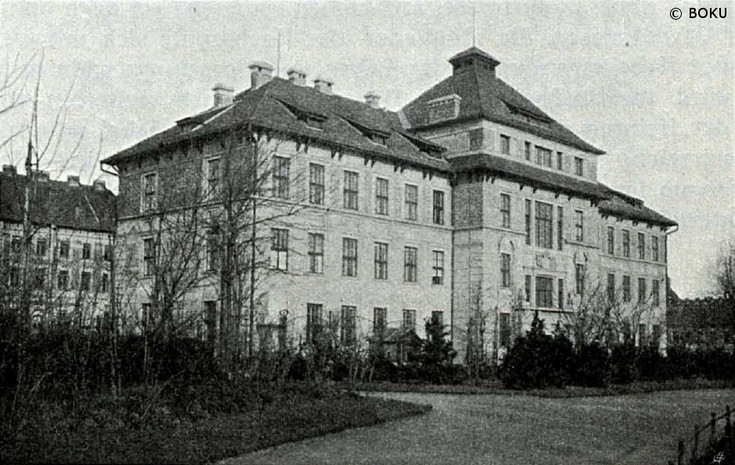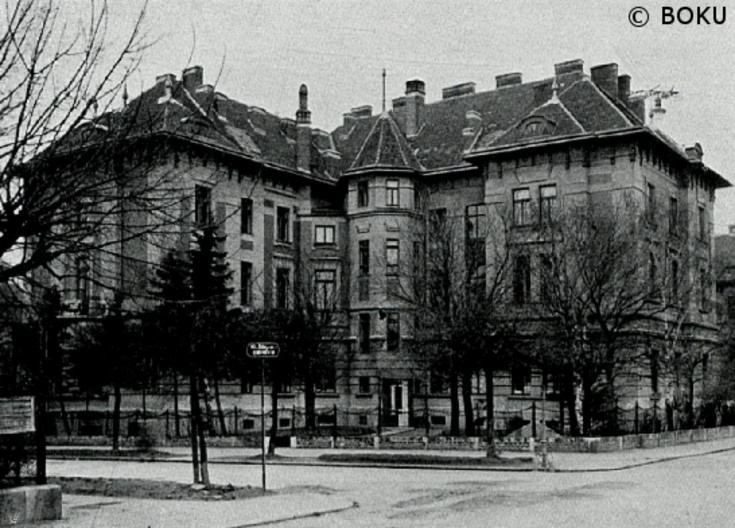The Development until 1914


In October 1902, the research farm in Groß-Enzersdorf (with 56 ha of leased area) was put into operation.
In 1904, the opening of the “Kaiser Franz-Joseph-Studentenheim” (Emperor Franz-Joseph Hall of Residence) and its affiliated cafeteria improved the learning and living circumstances for some students.
The gradual but constant expansion of the content of the curriculum led to an ever growing burden for students. Several times the professors and teaching staff requested the extension of the study program duration for all fields of study from six to eight semesters. In the study year 1905/06 this was approved.
On June 2nd, 1906 a new state examination order was issued according to which there were to be three state examinations for all three fields of studies. About a month later a doctoral vivae order was issued. The right to award the honors of a doctoral degree for agrology crowned the success story of teaching and research. The first ceremonial conferral of a doctorate could be celebrated almost one year after that.
Already ten years after the move to Türkenschanze, this new construction had already proven to be much too small. Again discussions related to the enlargement of the university began.
This problem was solved at that time thanks to an addendum and museum construction. Also the Ministry of Finance realized that an expansion was inevitable. This expansion building, the later “Guttenberg-Haus”, was transferred to the university in 1912. It remained the last building that was especially constructed for BOKU until the building of the Schwackhöfer-Haus in 1975.
In 1913, the university celebrated two anniversaries; the last ones in times of peace. On one hand, there was the commemoration of the foundation of the Forestry Academy Mariabrunn in 1813, and on the other hand, with one year delay, the 40th anniversary of the University of Natural Resources.
